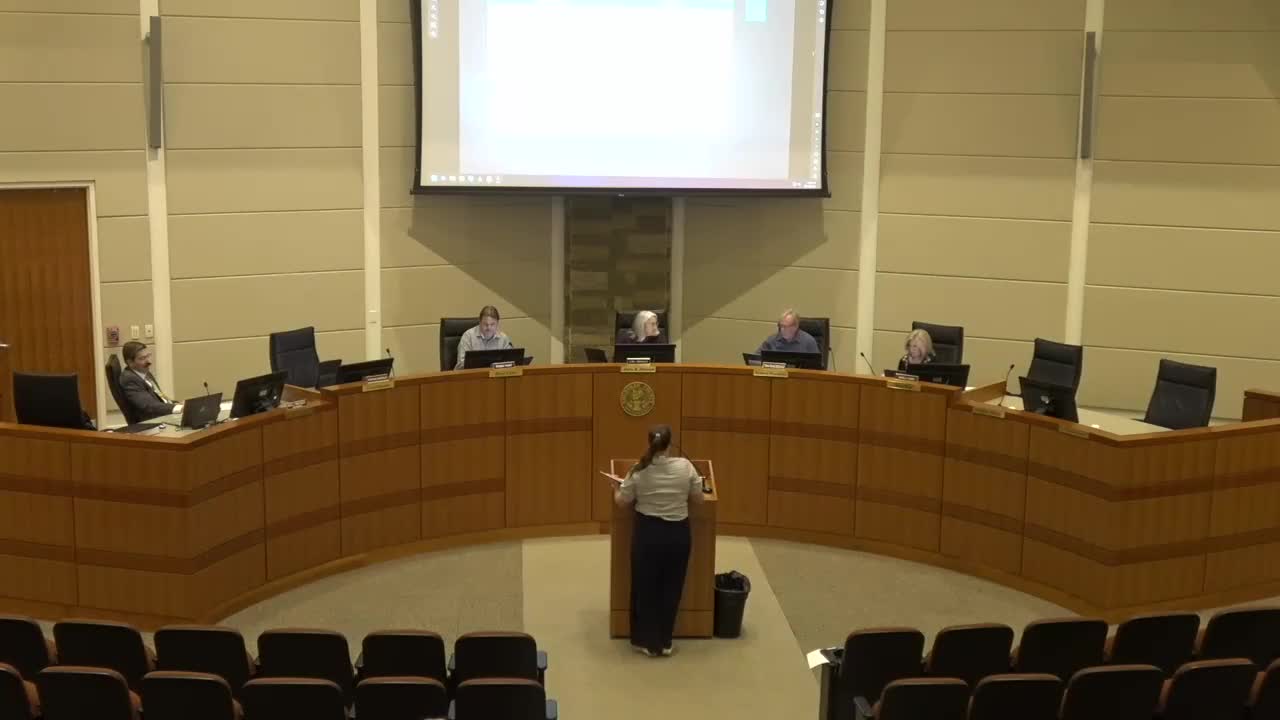County Transportation Approves Variances for Cabela's Way Development Plan
August 14, 2025 | Cherokee County, Georgia
This article was created by AI summarizing key points discussed. AI makes mistakes, so for full details and context, please refer to the video of the full meeting. Please report any errors so we can fix them. Report an error »

On August 14, 2025, the Cherokee County Zoning Board of Appeals convened to discuss several key zoning variances that could significantly impact local development. The meeting highlighted ongoing concerns regarding transportation alignment and building setbacks, which are crucial for ensuring safety and accessibility in the area.
One of the primary discussions centered around the alignment of entrances along Cabela's Way. The county's transportation department emphasized the importance of aligning new entrances with existing ones across the street to enhance safety. Although not explicitly mandated by ordinance, this alignment is strongly recommended by transportation officials. The board acknowledged that the current layout of proposed buildings does not align with these recommendations, raising questions about the feasibility of the development as it stands.
The board reviewed multiple motions related to the development, including a request to reduce the required setbacks along Cabela's Way from 50 feet to 30 feet and along Northpointe Parkway from 15 feet to 10 feet. This motion passed with a vote of 3 to 1, indicating some dissent regarding the proposed changes. Additionally, the board approved an increase in the maximum allowed parking spaces from 45 to 51, which was met with unanimous support, reflecting a positive outlook on accommodating more vehicles.
Another significant motion involved the removal of a required 40-foot streetscape along both Cabela's Way and Northpointe Parkway, which also passed unanimously. This decision could streamline development but raises questions about the aesthetic and functional implications for the area.
The board also considered reducing the minimum intersection spacing from 250 feet to 80 feet. While this motion was approved, concerns were raised about the safety implications of such a reduction. Board members discussed the potential need for further clarification on whether the entrances would remain as "right in, right out" or allow for full access, which could affect traffic flow and safety.
In conclusion, the meeting underscored the delicate balance between facilitating development and ensuring community safety and accessibility. As the board moves forward, the implications of these zoning decisions will be closely monitored, particularly in relation to transportation department approvals and community feedback. The next steps will likely involve further discussions on how to best align development plans with safety recommendations, ensuring that the needs of both developers and the community are met.
One of the primary discussions centered around the alignment of entrances along Cabela's Way. The county's transportation department emphasized the importance of aligning new entrances with existing ones across the street to enhance safety. Although not explicitly mandated by ordinance, this alignment is strongly recommended by transportation officials. The board acknowledged that the current layout of proposed buildings does not align with these recommendations, raising questions about the feasibility of the development as it stands.
The board reviewed multiple motions related to the development, including a request to reduce the required setbacks along Cabela's Way from 50 feet to 30 feet and along Northpointe Parkway from 15 feet to 10 feet. This motion passed with a vote of 3 to 1, indicating some dissent regarding the proposed changes. Additionally, the board approved an increase in the maximum allowed parking spaces from 45 to 51, which was met with unanimous support, reflecting a positive outlook on accommodating more vehicles.
Another significant motion involved the removal of a required 40-foot streetscape along both Cabela's Way and Northpointe Parkway, which also passed unanimously. This decision could streamline development but raises questions about the aesthetic and functional implications for the area.
The board also considered reducing the minimum intersection spacing from 250 feet to 80 feet. While this motion was approved, concerns were raised about the safety implications of such a reduction. Board members discussed the potential need for further clarification on whether the entrances would remain as "right in, right out" or allow for full access, which could affect traffic flow and safety.
In conclusion, the meeting underscored the delicate balance between facilitating development and ensuring community safety and accessibility. As the board moves forward, the implications of these zoning decisions will be closely monitored, particularly in relation to transportation department approvals and community feedback. The next steps will likely involve further discussions on how to best align development plans with safety recommendations, ensuring that the needs of both developers and the community are met.
View full meeting
This article is based on a recent meeting—watch the full video and explore the complete transcript for deeper insights into the discussion.
View full meeting
